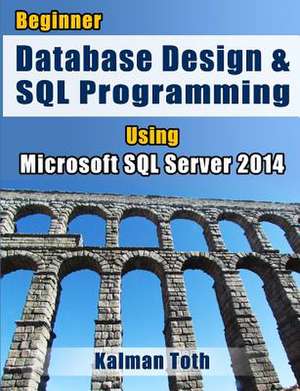Beginner Database Design & SQL Programming Using Microsoft SQL Server 2014
Autor Kalman Tothen Limba Engleză Paperback
Preț: 193.05 lei
Preț vechi: 241.31 lei
-20% Nou
Puncte Express: 290
Preț estimativ în valută:
36.95€ • 38.43$ • 30.50£
36.95€ • 38.43$ • 30.50£
Carte disponibilă
Livrare economică 22 martie-05 aprilie
Preluare comenzi: 021 569.72.76
Specificații
ISBN-13: 9781499321739
ISBN-10: 1499321732
Pagini: 608
Dimensiuni: 189 x 246 x 31 mm
Greutate: 1.07 kg
Editura: CreateSpace Independent Publishing Platform
ISBN-10: 1499321732
Pagini: 608
Dimensiuni: 189 x 246 x 31 mm
Greutate: 1.07 kg
Editura: CreateSpace Independent Publishing Platform
